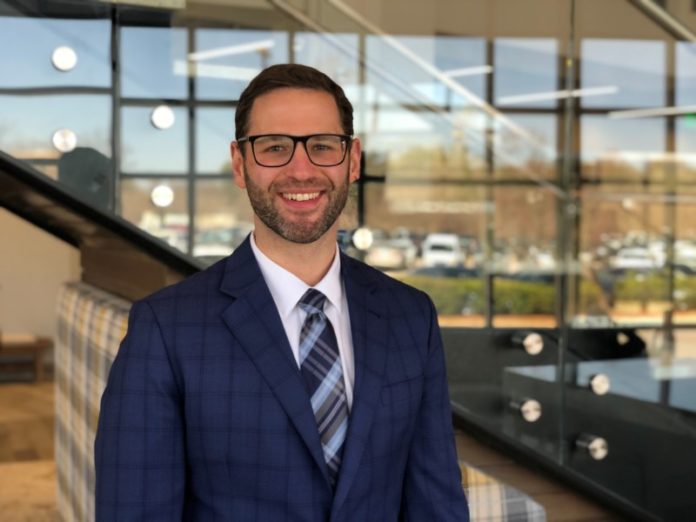Jeffrey Kutsikovich, M.D. is a board-certified and fellowship-trained orthopaedic surgeon specializing in disorders of the hand, wrist, elbow and shoulder. He is an active member of the American Society for Surgery of the Hand and a fellow of the American Academy of Orthopaedic Surgeons. Additionally, he currently serves as the team physician for Independence High School. We recently sat down with Dr. Kutsikovich to discuss technological advances in hand and wrist surgery, as well as hand therapy services.
WS: Where did your interest in hand/wrist begin?
Dr. Kutsikovich: I originally did my orthopaedics residency in Memphis at the Campbell Clinic, a large referral center from an orthopaedic standpoint. Working at a Level I Trauma Center, I found hand trauma fascinating. The surgical care of upper extremity disorders encompasses multiple types of surgical techniques including microvascular repair, delicate soft tissue reconstruction, traumatic bony injuries requiring internal fixation, and sports style surgery with advanced arthroscopic treatment. I was also intrigued because the hand is so critical to so many people’s daily functions.
WS: Have there been any recent technological advancements in hand/wrist surgery that have changed the quality of care patients receive?
Dr. Kutsikovich: A lot of the advancements in hand and wrist have been in the implant technology. Before, you would have to drill large holes in the bone to reconstruct ligaments. Now, there are small implants that are durable and allow minimally invasive repair and reconstruction techniques which can be used in long-term repair and short-term stability.
In 2019, Drew Brees, for example, had a skier’s thumb injury. The thumb ligament was repaired with a modern implant style called an Internal Brace made by Arthrex. Traditionally this type of injury for a quarterback would have been a season-ending injury in the throwing hand. However, this new generation of implants allowed Drew Brees to return only after six weeks. Five years ago that would have been unheard of.
The same goes for fracture fixation. Now, we have advanced plate designs which are specific for individual bone with variable angle locking constructs. The plates and screws we use can hold the bone better, facilitating faster rehabilitation and return to function. This is an improvement on older non-locking screws, or even fixed angle locking technology, which required a longer rehabilitation period.
WS: Speaking of rehabilitation, how has that field changed with regards to hand/wrist care?
Dr. Kutsikovich: Almost more than the implants, modern rehab protocols have really helped us advance patient care by getting patients back from an injury to functioning a lot quicker.
From a hand and wrist perspective, we have three Certified Hand Therapists here at Bone and Joint Institute. That certification requires an additional level of training – many hours of hand-specific training – beyond Occupational Therapy. (The certifying exam’s fail-rate is approximately 50 percent.) It’s essentially the highest quality of hand-therapy you can get.
Because of our clinical integration, we have seamless transitions of care between our therapists and the physicians. It’s easy to walk down the hall and personally communicate with our therapists about unique patient cases. Conversely, the therapists are able to alert the physicians if there are any issues that arise during the course of treatment.
WS: Along those same lines, how does the collaborative approach of Bone and Joint Institute help patients receive the best care?
Dr. Kutsikovich: A lot of orthopaedic groups are comprised of individuals that practice together as a collective bargain. Bone and Joint Institute is different. We are a true partnership representing every orthopaedic subspecialty. If there’s ever a trauma – say, wrist and hip fracture – we can make sure the patient receives the best care and has the highest level trained person taking care of their injury. Having access to partners in different specialties allows us to ensure patients get the best quality of care.
WS: What do you enjoy most about your work?
Dr. Kutsikovich: The thing I enjoy most is getting patients back to their previous level of activity and function. Often, we’re seeing patients with debilitating arthritis or traumatic injuries. After their recovery having patients tell me, “Hey, I’m getting back to doing yoga or planks,” or watching high school, collegiate, professional and recreational athletes getting back to their sports, that’s what I enjoy: getting individuals back to what they do pain-free.
Hand and Wrist Care at Bone and Joint Institute
For more information about hand and wrist treatment, contact Jeffrey Kutsikovich, M.D. at Bone and Joint Institute of Tennessee. Call (615) 791-2630. You can also schedule an appointment online.
Have a question for the Bone and Joint Institute, fill out the form below:
Please join our FREE Newsletter



















